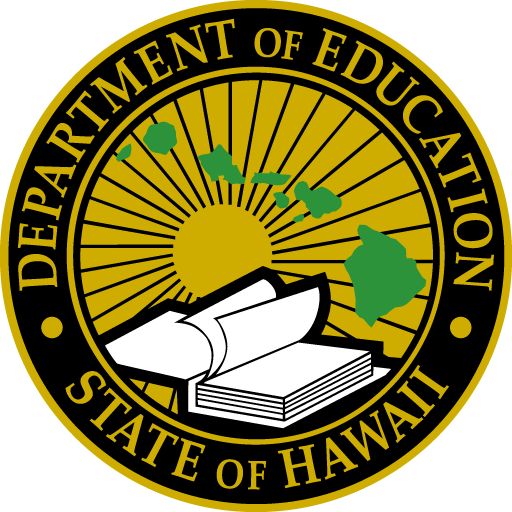We are committed to safeguarding student privacy and ensuring families are informed about their rights. From understanding the Family Educational Rights and Privacy Act (FERPA) to managing photo and media releases, this page provides key information and resources to help parents, guardians and students make informed decisions.
Explore policies, forms and guidelines designed to protect student data and uphold privacy in our schools.
Family Educational Rights and Privacy Act (FERPA)
Each year, Hawaiʻi public schools are required to notify parents of their rights under the federal Family Educational Rights and Privacy Act. These rights are generally broken into four sections. Here is a brief description of FERPA rights:
- The right to inspect and review the student’s education records within 45 days of the request.
- The right to request the amendment of the student’s education records that the parent, guardian or eligible student believe are inaccurate or misleading.
- The right to consent to disclosures of personally identifiable information (PII) contained in the student’s education records, except to the extent that FERPA authorizes disclosure without consent. One exception that permits disclosure without consent is disclosure to school officials with legitimate educational interests.
- 有權向美國教育部投訴學校未遵守 FERPA 的要求。
Parent Notification and Guide to Student 資訊 Privacy (PDF) 現有以下翻譯版本:
Consent for Release of Student 資訊
夏威夷行政法規第 34 章 (PDF) provides for the following rights relating to the educational records of students:
- 家長可以檢查、審閱、質疑或取得副本;允許其他人審閱;並準許釋放他們。
- The rights of parents shall be transferred to the student who has attained 18 years of age.
- 學生 under 18 years of age shall have the right to receive all educational data pertinent to facilitate instruction, guidance, and counseling.
第 34 章《資訊發布同意書》可用於授權發布或接收特定文件/資訊。
這 Consent for Release of Information of Student Records Form (PDF) (RS 23-0270) are available in:
目錄資訊
FERPA requires that the Department, with certain exceptions, obtain parent, guardian or eligible student’s consent prior to the disclosure of personally identifiable information from the student’s education records. However, the Department may disclose appropriately designated “directory information” without prior written consent, unless the parent or eligible student has advised the Department to the contrary in accordance with Department procedures.
The primary purpose of directory information is to allow the Department to include information from the student’s education records in certain school publications. Examples include, but are not limited to:
- A playbill, showing the student’s role in a drama production.
- 每年的年鑑。
- 榮譽榜或其他認可名單。
- 畢業課程。
- 體育活動表,例如摔角活動表,顯示隊員的體重和身高。
這 目錄資訊通知 (PDF) 還有:
Student Publication Audio/Video Release Forms
Photos, video and audio recordings, and student work products/publications are not considered directory information, and may include personally identifiable information protected under FERPA. Also, student teachers participating in educator preparation programs and staff in professional development courses within the Department may have access to photos, video and audio recordings, and student work samples in the course of their participation in these activities, and therefore would need parent/guardian/eligible student consent to have access to these materials. This consent is given via the following forms:
Student Publication/Audio/Video (SPAV) Release Form for Events (PDF) (RS 21-0479): Optional to allow consent for a specific school event or publication for the school year.
The SPAV event release form (RS 21-0479) is also available in:
Student Publication/Audio/Video (SPAV) Release Form (PDF) (RS 24-0607):除非撤銷,否則必須涵蓋所有學校活動和出版品。
The SPAV release form (RS 21-0480) is also available in:
保護學生權利修正案 (PPRA)
聯邦 PPRA 賦予家長某些權利,這些權利涉及我們進行調查、為行銷目的收集和使用資訊以及某些體檢。
這 保護學生權利修正案 (PDF) 還有:
向軍隊徵兵人員發布訊息
The federal Elementary and Secondary Education Act requires the Department to provide to military recruiters, upon their request, the name, address and telephone number (including unlisted number) of secondary school students. Although military recruiters focus their efforts on high school juniors and seniors, the law allows for the gathering of this information from the broad category of “secondary” students, defined as students in grades 7-12. If any secondary student or the parent/guardian of a secondary student does not want the Department to provide the requested information to military recruiters, the secondary student or the parent/guardian must opt-out of providing such information.
這 Military Recruiters’ Request for Student Information Notice (PDF) 還有:
這 軍事徵兵人員退出表 (PDF) 還有:
高等院校資訊發布
The Every Student Succeeds Act of 2015 requires all local education agencies to provide to institutions of higher education, upon their request, the name, address, and telephone number of secondary school students. Although post-secondary institutions focus their efforts on high school juniors and seniors, the law allows for the gathering of this information from secondary students. If any eligible student (18 years of age) or the parent/guardian of a secondary student does not want the HIDOE to provide the requested information to institutions of higher education, the secondary student or the parent/guardian must “opt-out” of providing such information.
這 Institutions of Higher Learning Request for Student Information Notice (PDF) 還有:
這 高等教育機構退出表 (PDF) 還有:
負責任的科技使用
The Department is committed to guide students in the use of technology as a tool to support their achievement. Parents/guardians should review the 技術負責任使用指南 (TRUG) (PDF) 和他們的孩子;然後簽署 技術負責任使用表 (TRUF) (PDF) 形成一項諒解和協議,遵守與部門擁有或租賃的數位設備、網路和互聯網服務有關的所有規則、法規和指南,這些規則、法規和指南可根據部門的需要進行修改或擴展。
這 技術負責任使用指南 (TRUG) (PDF) 還有:
這 技術負責任使用表 (TRUF) (PDF) 還有:
資源
- 學生隱私 Booklet, School Year 2025-26 (PDF)
- What is Student Data?: http://dataqualitycampaign.org/find-resources/what-is-student-data/
- FERPA guidance for parents and students: https://studentprivacy.ed.gov/audience/parents-and-students

更多資訊
資料治理與分析部門
電話:808-784-6050
電子郵件
